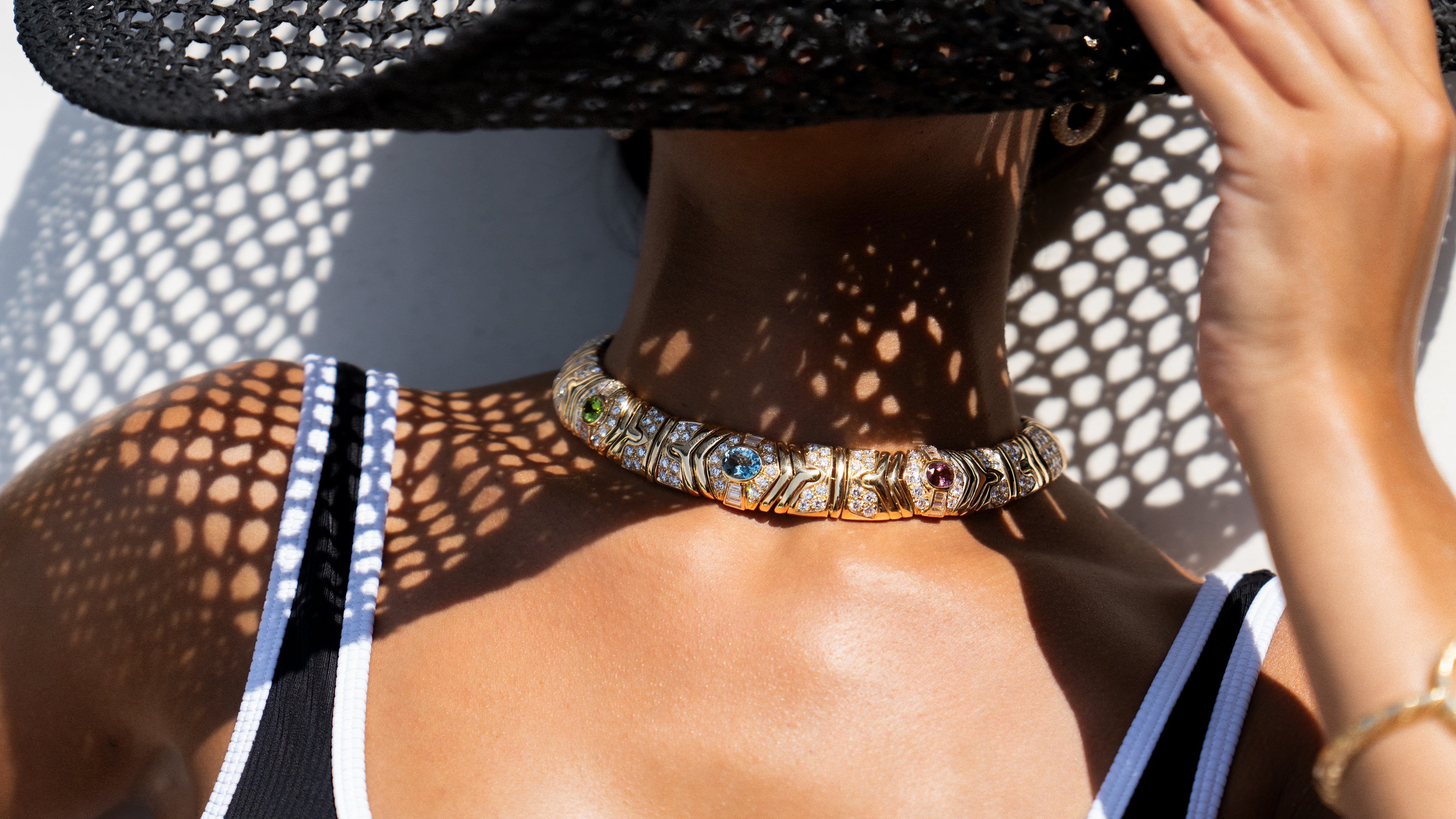Riker Brothers
Plique-a-jour is French for “letting in daylight,” a technique where enamel is applied in cells, then the backing is removed, creating a stained glass effect. The Riker Brothers were masters of this process, which was very challenging but positively stunning when completed successfully.
A Family Affair
William Riker, Jr. and Joseph Riker were second-generation jewelers. It was their father, William Riker, Sr., who began the family business.
William was the son of Dutch immigrants. Born in Montclair, New Jersey, in 1822, the elder Riker began an apprenticeship with a prominent jeweler at the age of 15. His studies continued in New York City before he settled in Newark, New Jersey. In 1846, he partnered with George H. Tay and opened his first jewelry shop.

At Home in Newark
Newark, at the turn of the 19th century, was at the center of jewelry production in America at a time when American-made luxury goods viewed favorably. This new industry, which required high quality and a hefty dose of honesty, helped American-made gold and silver jewelry desirable.
William’s strong suit was innovation. He patented several mechanical processes for the surface ornamentation of jewelry. He is credited with patenting a process that created rich textures of the firm’s designs – feathers, scales, wings, fur, for example. He also applied for and was granted a patent on a sash fastener.

The years passed, partners came and went, and the business moved locations. The elder Riker brought his three sons into the company in the 1870s. By 1892, he had retired, and his youngest son also left the firm, with William Jr. and Joseph remaining to continue the business as the Riker Brothers. The elder William died in 1898, and William Jr. became the official head of the company.
The target clientele for Riker Brothers jewelry was the newly emerging middle class. The jewelry was not cheaply made, but it was quite affordable at the time, even though excellent materials and expert craftsmanship were employed.

In 1870, the offices moved to a schoolhouse at 42 Court Street in Newark, where they remained until 1926, when they moved one final time, to Indianapolis, Indiana. The business closed in the 1940s.
Riker Designs
In the early years of the company, Riker sold gold fob chains and charms and specialized in masonic jewelry. In the 1870s, they produced onyx and cameo lockets, as well as cameo rings.
Especially popular in the late 19th Century were Riker designs that portrayed dragons, griffins, basilisks, and other mythical creatures. Brooches, stickpins, and cufflinks were the most sought-after adornments, and these were created in a variety of sizes. The depiction of the creatures followed a pattern. The dragon, for example, usually faced to the right, its tail wrapped around the sword behind it. Gemstone accents created intricate facial features – diamonds for the mouth, demantoid garnets or rubies for the eyes. Other gemstones such as emeralds and pearls were also employed.

A signature piece that is still sought after today is the owl, its colorful enamel wings outstretched, decorated in seed pearls with emerald eyes, rendered in 14K yellow gold.
The Riker Brothers, thanks to William’s patent, mastered designs that emphasized the surface patterns of the gold, rather than on the enamel. The gold was accented with rubies and diamonds, its surface projecting a sheen that mirrored some contemporary French styles
The plique-a-jour technique became popular with the advent of Art Nouveau, a style that reigned from 1890-1910. Due to the complexity of the process, the Rikers were one of the few houses to employ the plique-a-jour enamels. Their collection included Japanaesque water birds and Renaissance style necklaces and brooches, as well as the Art Nouveau pieces.

The Rikers’ enameled pieces were executed in bold, jewel tones of blue, green, and amber. William Riker, Sr. is credited with patenting a process that created rich textures of the firm’s designs – feathers, scales, wings, fur, for example, using mechanical equipment.

Many of the Rikers’ Art Nouveau bangles are also very distinctive, featuring curvy lines accented with dragons or flowers. The bangles were generally of the slip-on variety, oval in shape and decorated with precious and semi-precious gemstones. Link bracelets featured decorative clasps adorned with a sapphire-decorated dragon or a butterfly set with colored gemstones.

As well as the more affordable pieces, Riker also created a full line of gold and platinum jewelry. At the Newark Industry Exposition in 1916, the Riker Brothers displayed an 18-piece collection of platinum jewelry adorned with diamonds, sapphires, pearls, and other precious gemstones.
The Riker Brothers’ mark features a curved scimitar symbol with the letter “R” above it.
Browse our Entire of Riker Pieces

